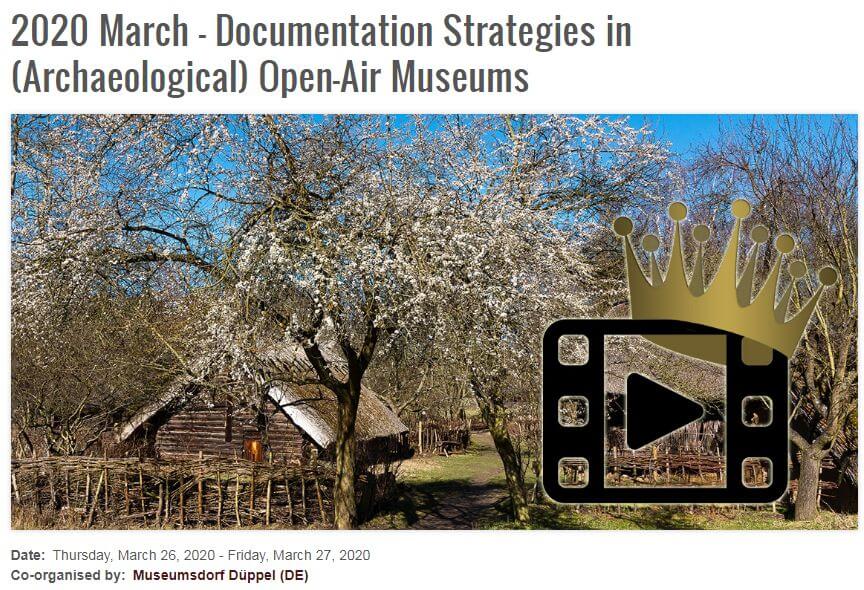I'm a little random-brained today, so you're getting random links.
First of all, amid all the cancelled conferences, EXARC will be holding theirs as a digital conference, live-streamed and later on available as well.
[caption id="attachment_5136" align="alignnone" width="864"] Note the genius symbol thingie in the bottom right corner. I take off my hat to whoever made this.
Note the genius symbol thingie in the bottom right corner. I take off my hat to whoever made this.
Tune in on their official website to learn about Documentation Strategies in Open-Air museums, free of charge, on March 26 and 27. (There will even be a Discord pub get-together, because there's no archaeology conference without a drink and a chat with the colleagues!)
The open-air laboratory Lauresham (where the European Textile Forum took place last year) has started a youtube channel where they plan to show clips of various places and activities taking place. Text is in German, but you can enjoy a view of that beautiful place no matter your language:
If you're looking for something else to do, you could try yourself in folding proteins - basically playing games for science. Relevant games, too, because there are puzzles related to the proteins in the Corona virus. You can download the programme on the official website (no phone apps available yet) and get going right away.
And that's it for today... different stuff tomorrow!
First of all, amid all the cancelled conferences, EXARC will be holding theirs as a digital conference, live-streamed and later on available as well.
[caption id="attachment_5136" align="alignnone" width="864"]
 Note the genius symbol thingie in the bottom right corner. I take off my hat to whoever made this.
Note the genius symbol thingie in the bottom right corner. I take off my hat to whoever made this.Tune in on their official website to learn about Documentation Strategies in Open-Air museums, free of charge, on March 26 and 27. (There will even be a Discord pub get-together, because there's no archaeology conference without a drink and a chat with the colleagues!)
The open-air laboratory Lauresham (where the European Textile Forum took place last year) has started a youtube channel where they plan to show clips of various places and activities taking place. Text is in German, but you can enjoy a view of that beautiful place no matter your language:
Privacy Policy Notification
This site attempts to embed videos from the YouTube web server. Please note that when loading YouTube videos, personal information may be transmitted to YouTube. Do you agree with the loading and playing of Youtube videos? You can find more information HEREIf you're looking for something else to do, you could try yourself in folding proteins - basically playing games for science. Relevant games, too, because there are puzzles related to the proteins in the Corona virus. You can download the programme on the official website (no phone apps available yet) and get going right away.
And that's it for today... different stuff tomorrow!



